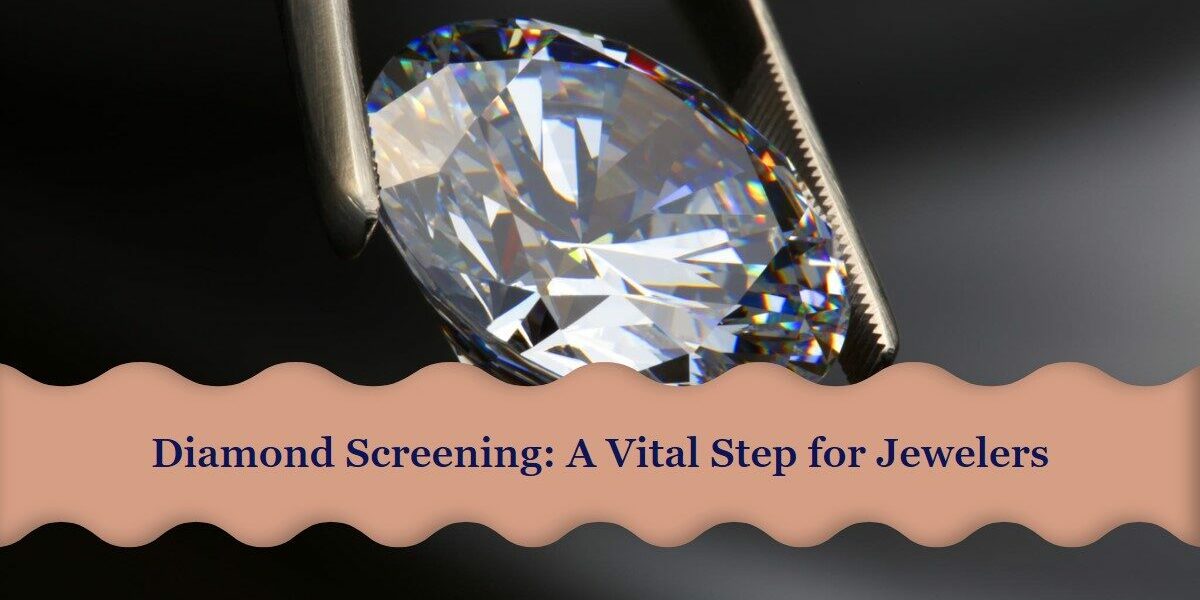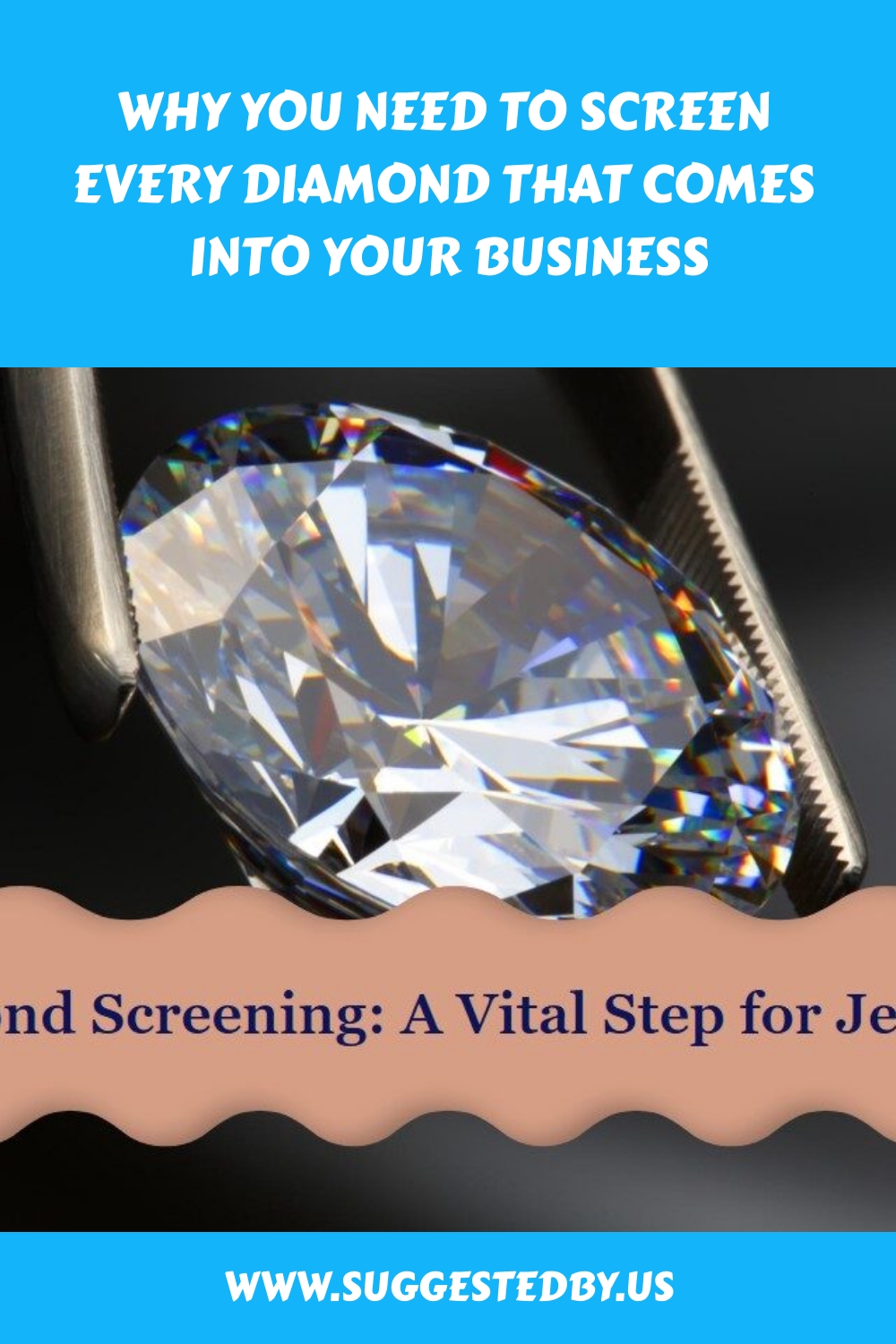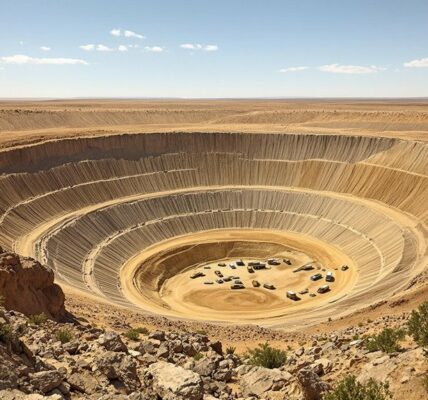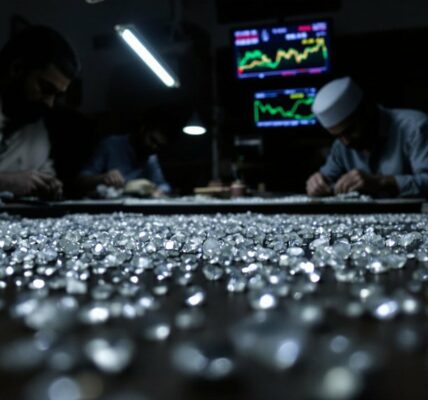While much discussion about lab-grown diamonds has centred on the question of whether they’re taking market share from naturals, less has been said about lab-growns possibly infiltrating the mined diamond supply chain. The diamond trade needs to adapt to the new situation and make the choice to screen every diamond before it is used or re-sold.
Article Contents
- 1 TL;DR: Why You Should Screen Every Diamond
- 2 Evidence of Lab-Grown Diamonds Infiltrating the Mined Diamond Supply Chain
- 3 Expected Increase in Incidents if Price Differential Between Natural and Lab-grown Diamonds Continues to Grow
- 4 The Importance of Proper Screening Devices and Procedures
- 5 The Risks of Not Having Proper Screening Devices and Procedures
- 6 The Importance of Verification for Customers
- 7 Industry Standards and Responsible Practices
- 8 The Bottom Line For Diamond Traders and Jewellers
- 9 Testing and Screening Recommendations
- 10 Misidentification and Nondisclosure of Diamond Type
- 11 The Importance of Accurate Disclosure
- 12 The Role of Industry Regulations
- 13 Further Reading About The Need To Screen Every Diamond
TL;DR: Why You Should Screen Every Diamond
Misidentification of lab-grown diamonds can occur due to carelessness rather than deceit. Ethical responsibilities dictate that diamonds should be accurately described, although the rules surrounding the sale of lab-grown diamonds are currently unclear. The nondisclosure of lab-grown diamonds is an ongoing industry discussion topic. Accurate disclosure is crucial for educated purchasing decisions, building trust, and preventing misunderstandings. Regulations and diamond identification technology play a role in promoting transparency and consumer protection.
Evidence of Lab-Grown Diamonds Infiltrating the Mined Diamond Supply Chain
Lab-grown diamonds, also known as synthetic or cultured diamonds, have made significant strides in recent years. These diamonds are created in a laboratory using advanced technology that replicates the conditions in which natural diamonds are formed. While lab-grown diamonds offer a more affordable and sustainable alternative to mined diamonds, their increasing popularity has raised concerns about potential fraud in the diamond industry.
Fraudulent inscriptions spotted by labs
One of the main challenges in the diamond industry is distinguishing between natural and lab-grown diamonds. To address this issue, gemological laboratories have developed advanced techniques to identify the origin of a diamond. However, some unscrupulous individuals have found ways to deceive these labs by fraudulently inscribing natural diamond identification numbers on lab-grown stones.
These fraudulent inscriptions are a cause for concern as they can easily infiltrate the mined diamond supply chain. These lab-grown diamonds can be mistakenly sold as natural diamonds to unsuspecting customers if undetected. This not only undermines consumer confidence but also poses a threat to the integrity of the diamond industry as a whole.
A recent case of a jeweller charged with selling synthetics as naturals
In a recent and high-profile case, a jeweller was found guilty of Grand Larceny for selling lab-grown diamonds as natural diamonds. This incident highlighted the need for stricter regulations and enhanced transparency in the diamond industry. It also served as a wake-up call for both consumers and industry professionals to be vigilant when purchasing or dealing with diamonds.
The case brought to light the ease with which lab-grown diamonds can be passed off as natural. The use of fraudulent inscriptions, along with other deceptive practices, can make it challenging for even experienced gemologists to detect these synthetic stones. As lab-grown diamonds become more prevalent, such cases may become more frequent unless stronger measures are put in place.
Expected Increase in Incidents if Price Differential Between Natural and Lab-grown Diamonds Continues to Grow
One of the main factors driving the infiltration of lab-grown diamonds into the mined diamond supply chain is the growing price differential between natural and lab-grown stones. Lab-grown diamonds are often significantly cheaper than their natural counterparts, making them an attractive option for budget-conscious consumers. For example, De Beers’ Lightbox brand sells lab-grown diamonds at $800- 1500 per carat compared to almost $4000 in February 2024.
As the demand for lab-grown diamonds increases and their prices continue to drop, the temptation for dishonest individuals to sell lab-grown diamonds as natural will likely rise. This could lead to a significant increase in incidents of fraud within the diamond industry. It is crucial for industry organizations and regulatory bodies to take proactive measures to combat this issue and protect both consumers and the reputation of the diamond industry.
So, the infiltration of lab-grown diamonds into the mined diamond supply chain is a growing concern within the diamond industry. Fraudulent inscriptions and deceptive practices have been identified as key factors contributing to this issue. As lab-grown diamonds become more prevalent and their price differential with natural diamonds continues to grow, the potential for fraud in the industry is expected to increase. It is imperative for industry stakeholders to work together to develop effective solutions and restore trust in the diamond market.
The Importance of Proper Screening Devices and Procedures
Diamond sellers without proper screening devices and procedures are ‘flying blind’. In an industry where natural diamonds are highly valued, it is crucial for sellers to have the necessary tools and protocols to verify the authenticity of their goods. This not only safeguards the reputation of the seller but also ensures that customers are getting what they pay for.
Verification of goods is necessary to ensure they are natural. With the growing presence of lab-grown diamonds in the market, it has become even more important for sellers to have effective screening devices. These devices help differentiate between natural diamonds and their synthetic counterparts and identify any treatments or enhancements that may have been applied to the stones.
Diamond dealers and jewellers have a responsibility to verify what they’re selling. Selling misrepresented or undisclosed diamonds can have serious consequences for both the seller and the customer. It can lead to legal issues, damage the seller’s reputation, and violate the trust of customers. Therefore, it is not only ethically responsible but also in the best interest of the seller to invest in proper screening devices and follow established procedures.
The Risks of Not Having Proper Screening Devices and Procedures
Without proper screening devices and procedures, diamond sellers are at risk of unknowingly selling synthetic or treated diamonds as natural. This can result in dissatisfied customers who feel deceived and cheated. In addition to losing customer trust and potentially facing legal consequences, the seller may face reputational damage that can affect their long-term success in the industry.
Furthermore, when synthetic diamonds are mistakenly sold as natural, it undermines the value and rarity that is associated with natural diamonds. This can have a negative impact on the entire diamond industry, as it erodes consumer confidence and disrupts the market. It is, therefore, crucial for sellers to accurately represent the nature of the diamonds they are selling.
The Importance of Verification for Customers
As a customer, purchasing a diamond is a significant investment. Whether it’s an engagement ring or a piece of jewellery, customers want to be confident in the quality and authenticity of the diamond they are buying. Proper verification procedures give customers peace of mind, knowing that they are purchasing a genuine and natural diamond.
By investing in proper screening devices and following established procedures, diamond sellers can provide their customers with the assurance they need. This builds trust and strengthens the customer-seller relationship, leading to repeat business and positive word-of-mouth recommendations.
Industry Standards and Responsible Practices
The diamond industry has established various standards and responsible practices to ensure the proper screening and verification of diamonds. These standards include the use of advanced screening devices such as diamond testers, spectrometers, and UV lamps, as well as following established protocols for identifying synthetic or treated diamonds.
Industry organizations such as the Gemological Institute of America (GIA) also provide training and certification programs for diamond professionals. These programs educate sellers on the different types of diamonds, their characteristics, and the potential treatments or enhancements that may be applied to them. By staying updated on industry standards and best practices, sellers can better serve their customers and protect their own interests.
The Bottom Line For Diamond Traders and Jewellers
In the diamond industry, proper screening devices and procedures play a vital role in maintaining integrity, trust, and customer satisfaction. Sellers who invest in these tools and follow established protocols demonstrate their commitment to responsible practices and their dedication to providing customers with genuine natural diamonds. By prioritizing verification, sellers can elevate the industry as a whole and ensure a positive diamond-buying experience for customers.
Testing and Screening Recommendations
Jewellers play a crucial role in ensuring the authenticity and integrity of the diamonds they handle. It is important not only to test the diamonds that come in off the street but also those that come from suppliers. This comprehensive testing process helps maintain customer trust and ensures that the jewellery industry operates ethically and responsibly.
The Diamond Manufacturers & Importers Association (DMIA) recognizes the significance of accurate testing and offers screening devices for its members. These devices are designed to identify potential treatments and synthetic diamonds, helping jewellers make informed decisions during the buying and selling process.
For additional resources and comparisons of screening devices, it is recommended to check the Natural Diamond Council’s Assure Program page. This program provides valuable information about various screening devices available on the market, allowing jewellers to choose the most effective tool for their specific needs.
However, it’s essential to understand that most devices on the market are screeners, not detectors. While they can provide valuable insights into the authenticity of a diamond, a final determination often requires additional laboratory testing.
The Importance of testing diamonds
Testing diamonds is crucial for jewellers as it helps verify the authenticity and quality of the gemstones they work with. Without proper testing, jewellers risk unknowingly selling treated or synthetic diamonds, which can lead to customer dissatisfaction and damage to their reputation.
By conducting thorough testing, jewellers can confidently stand behind the diamonds they sell, assuring their customers of their authenticity and value.
Comparing diamond screening devices
The Natural Diamond Council’s Assure Program page offers a comprehensive resource for comparing various screening devices available in the market. This page provides valuable information on different devices’ capabilities, limitations, and effectiveness, making it easier for jewellers to choose the most suitable one.
When comparing screening devices, jewellers should consider factors such as accuracy, ease of use, portability, and cost. Each device has its strengths and limitations, and understanding these factors will help jewellers make an informed decision.
Limitations of diamond screening devices
While screening devices provide valuable insights, it’s important to remember that they are not foolproof and cannot provide a definitive determination on their own. Final confirmation of a diamond’s authenticity often requires additional laboratory testing.
Laboratories equipped with advanced technology and trained gemologists can offer more precise analysis, including sophisticated spectroscopic examinations and various other tests.
Testing and screening diamonds are essential for jewellers to maintain their reputation and ensure the authenticity of the gemstones they sell. The resources provided by the Natural Diamond Council’s Assure Program offer valuable tools for jewellers to perform preliminary testing.
However, it is crucial to acknowledge that these devices are screeners, not detectors; final determination may require laboratory testing. By integrating a comprehensive testing process, jewellers can prioritize consumer confidence and contribute to the integrity of the diamond industry.
Misidentification and Nondisclosure of Diamond Type
Misidentification of lab-created diamonds can sometimes occur, but it is typically the result of carelessness rather than intentional deceit. Due to the similarities between lab-grown and natural diamonds, it can be challenging for even experienced professionals to identify them accurately without the use of specialized equipment.
When it comes to the sale of lab-grown diamonds, the rules regarding the disclosure of their origin are currently unclear. While some ethical jewellers and retailers are diligent in accurately describing lab-grown diamonds, others may choose to sell them as natural diamonds without proper disclosure. This lack of transparency can lead to misunderstandings and potentially misinformed purchasing decisions. In many jurisdictions, misrepresenting the source and type of diamond is a breach of consumer legislation. However, unearned profits are sure to be a temptation!
However, it is important to note that jewellers and retailers’ legal and ethical responsibility is to describe what they are selling accurately. While the laws surrounding the sale of lab-grown diamonds may vary by jurisdiction, honesty and transparency should always be at the forefront of any business’s practices. Consumers have the right to know whether the diamond they are purchasing is natural or lab-grown.
The nondisclosure of lab-grown diamonds is a topic of ongoing discussion within the diamond industry. Some argue that it is essential for consumers to be fully informed about the origin of the diamonds they are purchasing, while others believe that the distinction between natural and lab-grown diamonds is not significant and should not be a major factor in purchasing decisions. This debate reflects the evolving nature of the diamond industry and the shifting attitudes towards lab-grown diamonds. The FTC has issued guidance to the industry about the usage of terms relative to mined or laboratory-created diamonds.
The Importance of Accurate Disclosure
Accurate disclosure regarding lab-grown diamonds is crucial for several reasons:
- Educated Purchasing Decisions: When consumers are provided with accurate information about the origin of a diamond, they can make more informed purchasing decisions. Whether someone prefers a natural diamond or a lab-grown one, having access to the necessary information allows buyers to align their purchase with their values and preferences.
- Trust and Confidence: Openly disclosing that a diamond is lab-grown builds trust between consumers and sellers. Providing accurate information creates confidence in the industry and strengthens the reputation of those who prioritize transparency.
- Preventing Misunderstandings: Misidentifying a lab-grown diamond as a natural one can lead to misunderstandings and disappointment for buyers. Clear disclosure avoids such situations and ensures that customers are not misled.
The Role of Industry Regulations
While regulations regarding the sale of lab-grown diamonds can differ across jurisdictions, industry organizations have also established guidelines to address the issues of misidentification and nondisclosure. These guidelines aim to promote transparency, ethical business practices, and consumer protection.
Additionally, advancements in diamond identification technology continue to improve the accuracy and efficiency of distinguishing between natural and lab-grown diamonds. This progress allows jewellers to meet their legal and ethical obligations by providing accurate disclosure to their customers.
Further Reading About The Need To Screen Every Diamond
1: https://www.professional-jeweler.com/lab-grown-diamonds-jeweler-arrested/
4: https://www.diamonds.pro/education/1-carat-diamond-ring/
6: https://www.naturaldiamonds.com/council/assure-testing-program/
7: https://www.gemlogis.com/synthetic-diamond-segregators
8: https://www.linkedin.com/pulse/navigating-regulations-loose-diamonds-industry-miking-vw5je/
10: https://www.naturaldiamonds.com/instruments/diamondview-2/
11: https://www.ftc.gov/business-guidance/blog/2019/05/many-facets-advertising-diamonds-clarity






